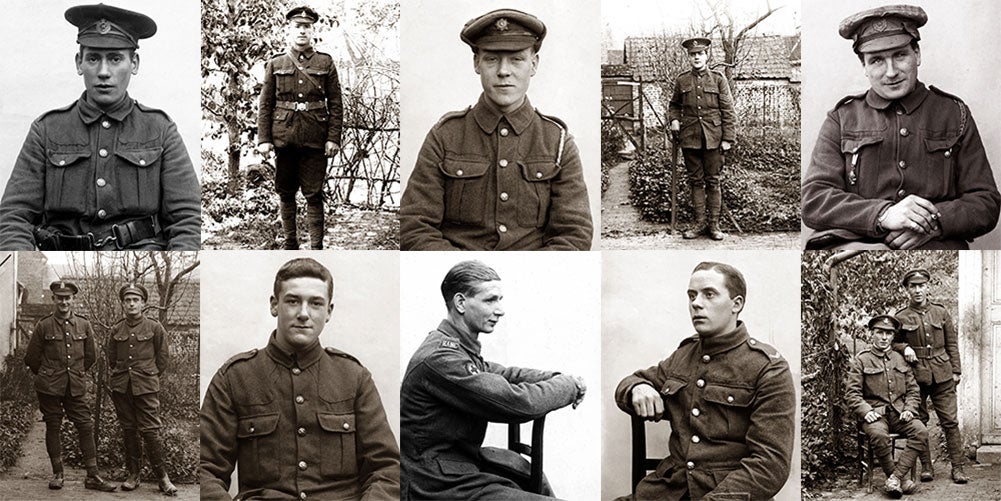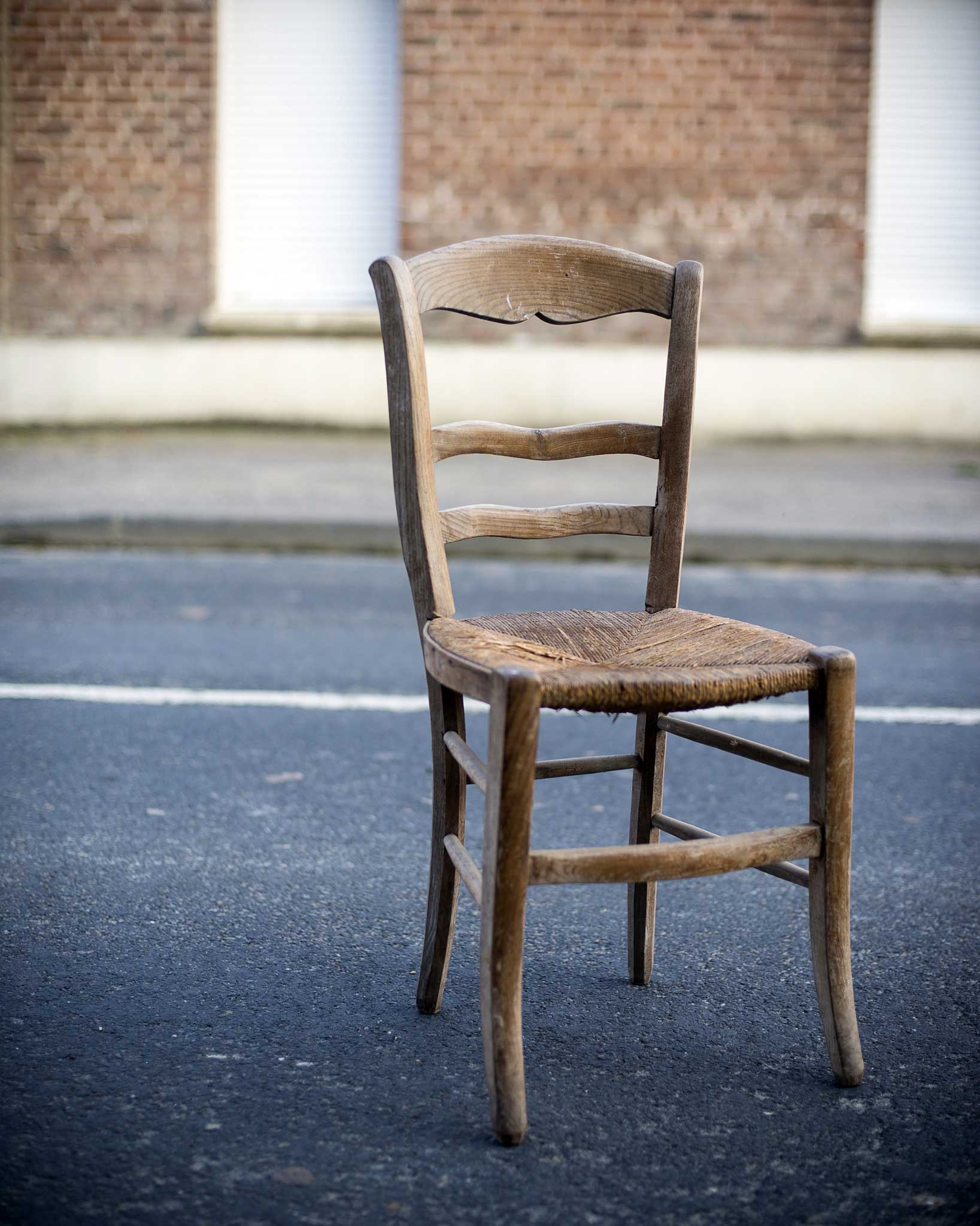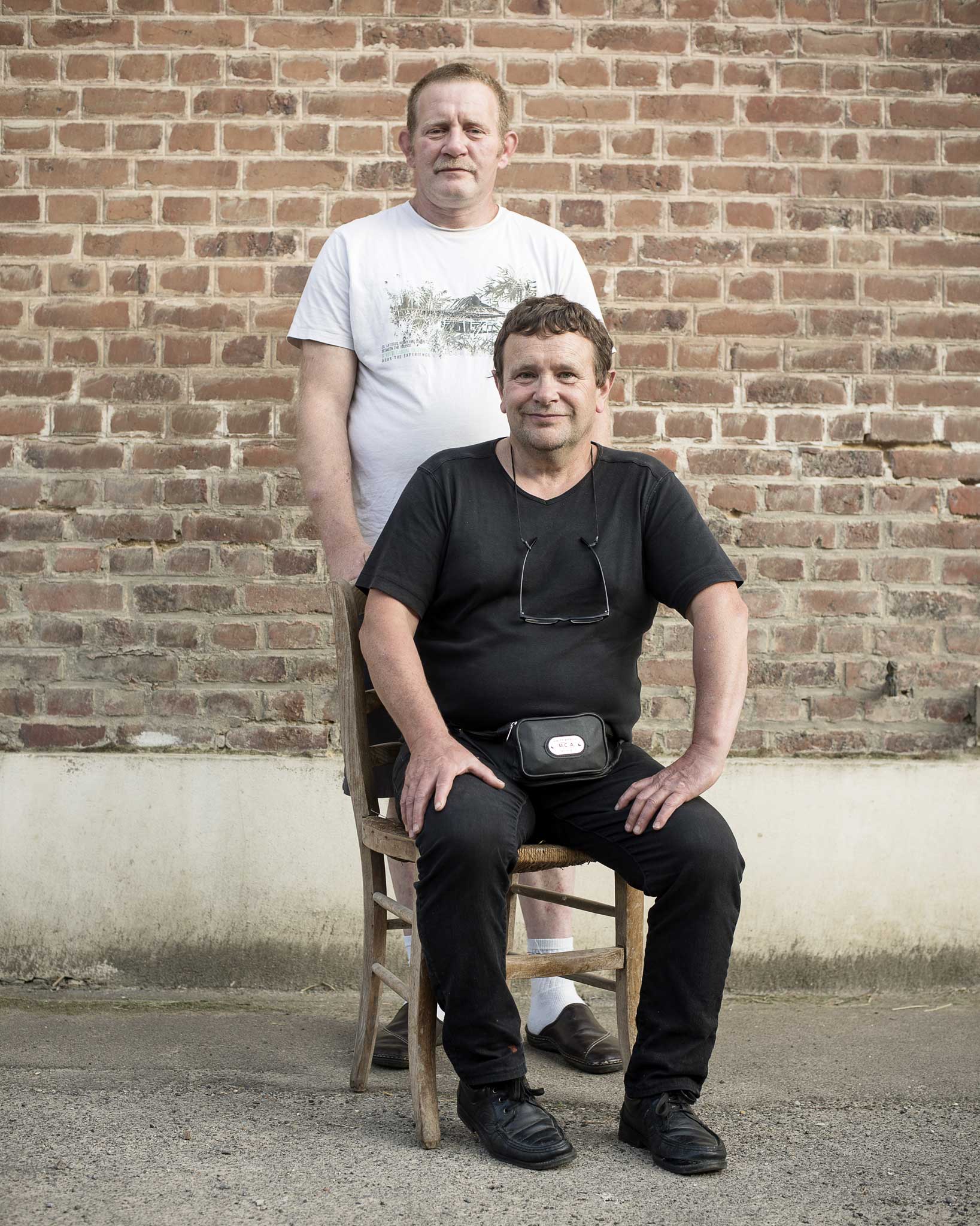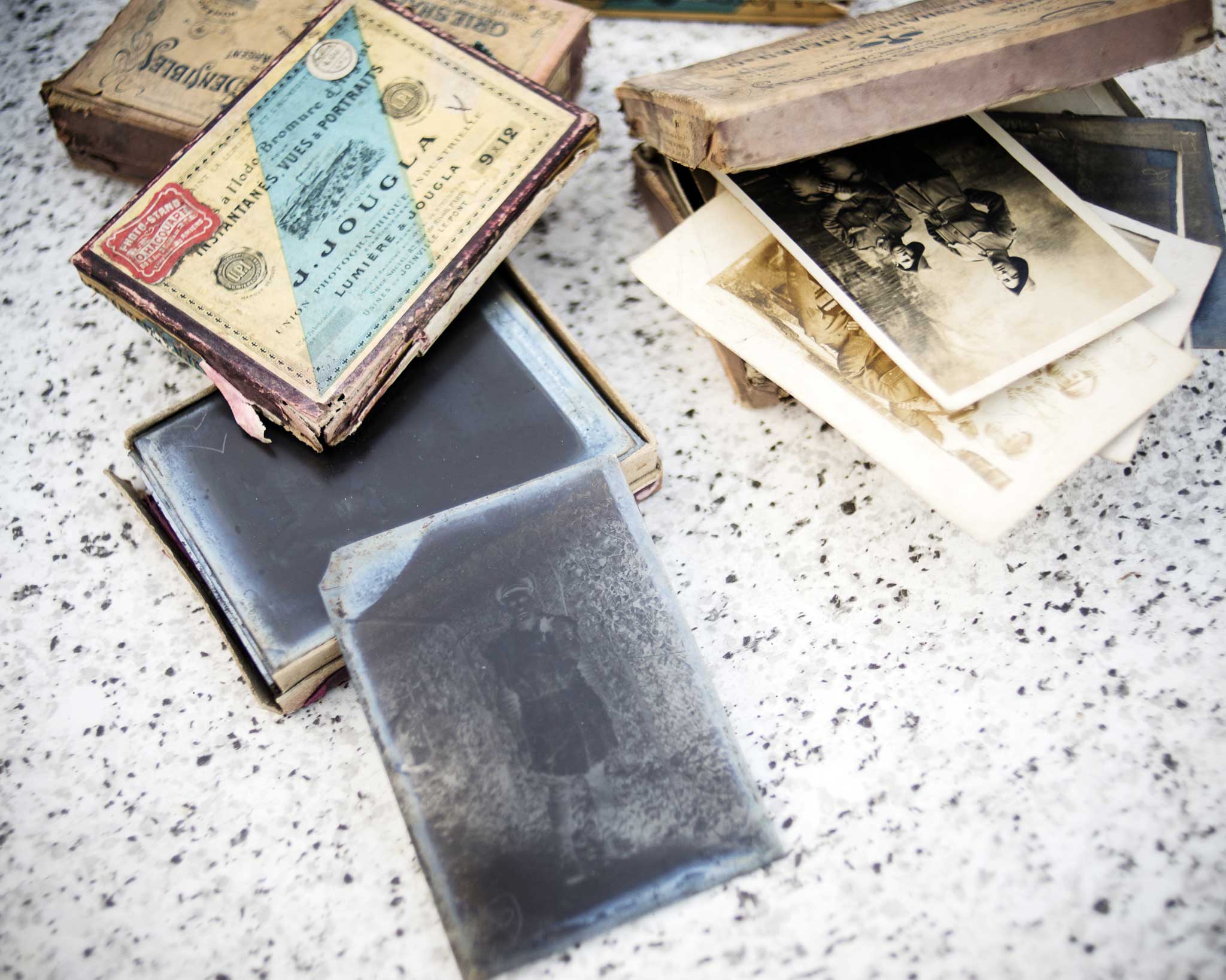Lost portraits of the Somme: 100 images of Tommies posing before they went over the top. Now can you help to identify them?
A cache of a local photographer's portraits has come to light in a study of doomed youth

Your support helps us to tell the story
From reproductive rights to climate change to Big Tech, The Independent is on the ground when the story is developing. Whether it's investigating the financials of Elon Musk's pro-Trump PAC or producing our latest documentary, 'The A Word', which shines a light on the American women fighting for reproductive rights, we know how important it is to parse out the facts from the messaging.
At such a critical moment in US history, we need reporters on the ground. Your donation allows us to keep sending journalists to speak to both sides of the story.
The Independent is trusted by Americans across the entire political spectrum. And unlike many other quality news outlets, we choose not to lock Americans out of our reporting and analysis with paywalls. We believe quality journalism should be available to everyone, paid for by those who can afford it.
Your support makes all the difference.In the heart of the First World War's battlefields, British soldiers visited a local amateur photographer to sit for souvenir portraits to be sent home as postcards. The discovery of the latest tranche of these extraordinary pictures – and the chair many were taken on – provides a rare, tender view of those who fought.
Five years ago, the faces of dozens of unknown British soldiers of the Somme – the 'selfies' of 1916 – gazed hauntingly from the pages of The Independent Magazine.
The images, scanned from old glass negatives which had surfaced in northern France, were believed to have been taken by a local photographer. They showed British and a few Australian soldiers, in formal or informal poses, during or just before the most murderous battle in the history of the British Empire.
It was assumed that the images were made into postcards or prints to send home. Just like the selfies of today, the portraits were a mixture of the good and the indifferent, the in-focus and the out-of-focus. The soldiers were neat and scruffy, short and tall, solemn and jokey. There were individuals, pairs, small groups and big groups... There was even a black artilleryman (one of the few images ever found of a black British soldier in the First World War).
French civilians sometimes appeared, especially two little girls who sat with serious faces on the soldiers' knees. A dog occasionally turned up. Many of the portraits featured the same battered white door or the same wooden chair and the same back garden.
There were 400 images in the original batch, rescued from attics and skips in the Somme region. We published two further batches totalling around 100 images in 2010 and 2013 (including some probably from another source).
The photographs, which were displayed on The Independent website, generated extraordinary interest from all over the world. In the first year alone, our 'unknown soldiers' were viewed online more than 1,700,000 times. Only four or five soldiers were identified.
As the centenary looms on Monday of Britain's declaration of war on 4 August, 1914, we can now tell the whole story – or almost all of it – of how the 'Somme selfies' came to be taken, where and by whom.
Thanks to three local collectors, we are publishing a new batch of 100 photographs:
Frustratingly, it turns out that until a decade ago, a trunk full of such glass plates of Tommy images survived on the Somme. There might have been several thousand pictures in the original collection, which was scattered in circa 2004. Many were probably thrown on to rubbish heaps and lost.
We have seen, we think, the original chair on which many of the soldiers posed. We are able to identify the two little girls. They were called Marguerite and Rose. They were the nieces of the photographer, Alfred Dupire, a local businessman.
The house where most of the photographs were taken was 45 Rue d'Amiens, now 45 Rue du Général Leclerc, in the village of Warloy-Baillon, eight miles behind the front lines of the Somme. The garden and courtyard seen in the background of many of the shots, sadly, no longer exists.
It was, according to legend, a love affair in Warloy-Baillon between a British officer and a local woman which inspired one of the great First World War popular songs, "Roses of Picardy". A few of the new images show French civilians, probably members of the photographer's family. Since the little Rose seen in the images was too young (probably only six), perhaps one of the local women pictured was the original "rose that dies not in Picardy... the rose that I keep in my heart!".
Many of the British soldiers wear the cap-badge of the DLI – the Durham Light Infantry. There are also fine portraits of Scots soldiers in bonnets with Highland Light Infantry badges. (Both the DLI and the HLI played a big part on the bloody first day of the Somme.) There are also Gloucesters, Sherwood Foresters, Royal Engineers, medics and members of the Machine Gun Corps.

In some images, the soldiers are wearing captured German ceremonial spiked helmets – suggesting that the Battle of the Somme (July to November, 1916) is already under way. In other pictures, the soldiers are wearing sheepskins, making them look oddly like Greek partisans or ancient British warriors. There was, apparently, an overcoat shortage in the bitter winter of 1915. Sheepskins were sent out to France instead.
First World War photographs usually show smart soldiers before leaving home, or exhausted soldiers during combat. Here we see soldiers relaxing, either before or just after fighting in the trenches just to the east.
The pictures capture a British Army in transition. The regular and territorial soldiers, who fought in the terrible battles of 1914 and 1915, have almost all vanished. They have been replaced by Lord Kitchener's amateur volunteers – the 'Pals' and 'Chums' – who fought for the first time, and died in their tens of thousands, in the Somme offensive.
There are one or two walrus- moustached soldiers of the old school. Their faces could have been found at Balaclava or Waterloo. Many other soldiers seem heart-wrenchingly young. Their faces are startlingly modern. They look like young Brits that you could meet in a pub in 2014.
The images have come to light thanks to three local men: Bernard Gardin, aged 65, a photography enthusiast; Dominique Zanardi, aged 49, proprietor of the 'Tommy' café at Pozières, a village in the heart of the Somme battlefields; and Joel Scribe, aged 48, a local builder and collector of First World War memorabilia.
Gardin and Zanardi assembled the collection of 400 or so images that we have already published, rescued over the past six years from attics, skips and jumble sales in the Somme area. Separately, Scribe had acquired the 200 images that we publish now.
He has also found a dozen examples of the original postcards of Tommies printed from the glass plates. He is convinced he has found THAT chair.
By talking to neighbours in Warloy-Baillon, and to descendants of the photographer before they died, Scribe has established how the pictures came to be taken.
"Alfred Dupire was not a professional photographer. He was quite well off and his hobby was photography," Scribe said. "When a new British unit arrived in the village, word would go round that they could have their picture taken for a few francs and he would sell them postcards to send home. Before he died a few years ago, Dupire's grandson told me that the soldiers would queue in the street waiting for their turn."

He found the chair – identical to the one in the images, but stripped of its varnish – among other objects which had been removed several years ago from the attic at 45, Rue du Général Leclerc. Until roughly 2004, Scribe believes, a whole trunk containing glass plates of Tommy images survived in this attic. What happened to it is somewhat confused and disputed.
"At one point, I thought that I had bought all the plates, but after I got 200 of them, the deal was interrupted," Scribe said. "Some must have been sold. Others seem to have been just dumped."
How many glass plates would have filled a trunk? "Hundreds and hundreds. Quite possibly thousands," Scribe said.
Zanardi, proprietor of the Tommy café, still believes that more missing plates will come to light. "If you look at the boxes of glass plates, each is dominated by a single unit or regiment," he said. "Each time a new battalion was billeted in the village, they must have gone to have their pictures taken. It is frustrating that so many have disappeared. They would have been a fantastic record of the British Army on the Somme in 1916."
All is not lost, Zanardi insists. "Publicity has brought some of the vanished plates to light already," he said. "It could happen again."

Only a handful of the soldiers shown in the original batches of images have been identified. Many quite possibly died soon after their pictures were taken.
The Somme was the most murderous single battle of the 1914-18 war. In a little less than five months, an estimated 1,200,000 British Empire, French and German soldiers were killed, captured or wounded. There were more than 400,000 British and Empire casualties, including 125,000 deaths – 21,000 on the first day alone.
One of the original postcards acquired by Scribe was filled in but never posted. One wonders why. The card reads, rather formally: "Please excuse photo it's not very good... I am standing up marked with an x, Sgt WH Gunn".
Did he die before he could send it home? Apparently not. No soldier called Sergeant WH Gunn died on the Somme. Maybe he simply decided that it was one of those selfies best kept to oneself.
The ‘History of the First World War in 100 Moments’ can be seen online at: independent.co.uk/greatwar
Join our commenting forum
Join thought-provoking conversations, follow other Independent readers and see their replies
Comments